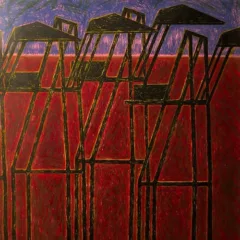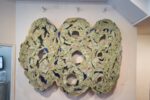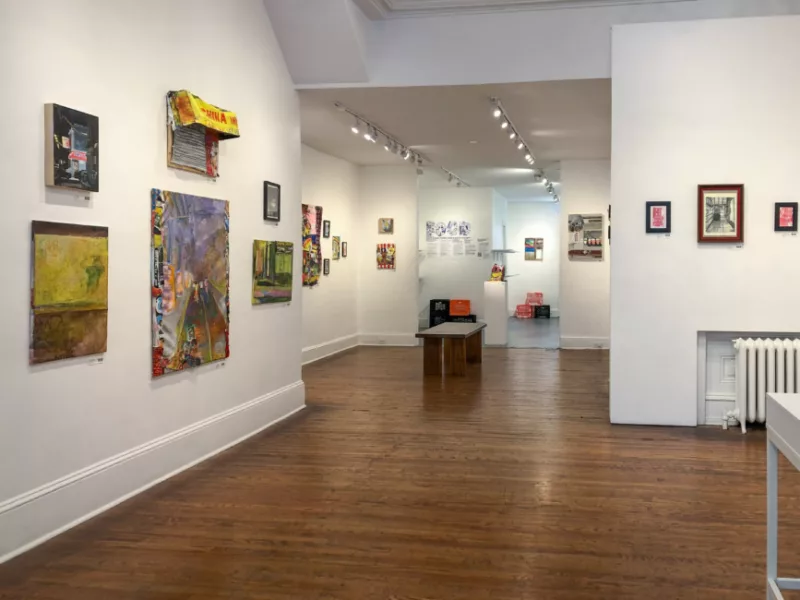
A celebration of painting, drawing, and art-making by three impressive talents, Corner Stories also carries a strong message about hunger and the role of corner stores in Philadelphia and cities around the world. The exhibition and food/toiletry drive by Eustace Mamba, Jake Weiss, and Nasir Young (members of Alchemy Art Ensemble), opened on Aug. 2 and runs through Aug. 20 at Da Vinci Art Alliance (DVAA), with a closing reception and artist talk on Aug. 20, noon – 2 pm.
To increase awareness of hunger in Philadelphia, Mamba, Weiss, and Young are exhibiting 49 drawings, paintings, and mixed-media constructions, all created in 2023, and asking visitors to bring donations of food or toiletries to the show. Toward the back of DVAA’s first-floor gallery, they created a store-like space, with shelving where the donated items are displayed as part of the exhibition. The artists, who became friends while attending the Pennsylvania Academy of Fine Arts, all majored in illustration, and their works reflect an emphasis on storytelling. They curated the exhibition with support from DVAA, where Young was recently a resident artist; the food/toiletries drive will benefit Bebashi – Transition to Hope in Philadelphia.
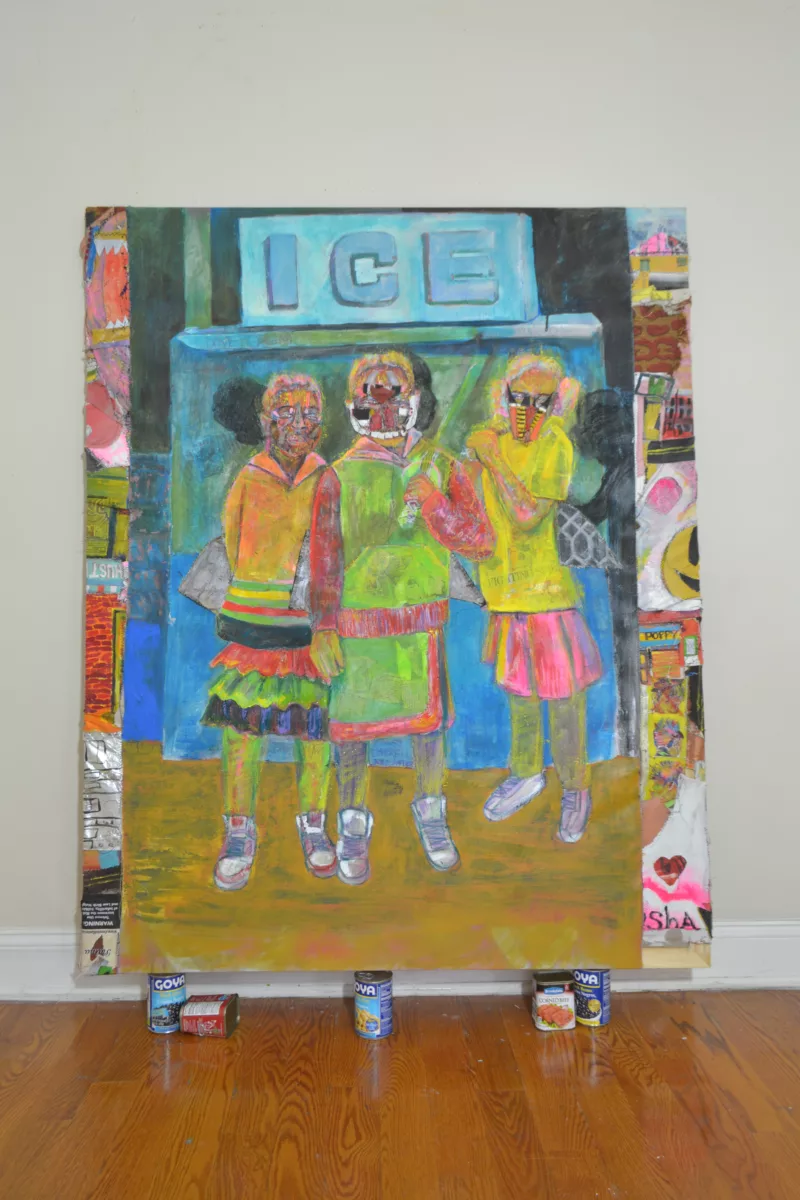
Intense interplay among the works is striking. It almost feels as if Mamba’s “Goya Girls (Katana),” a painting installed propped on cans of Goya products, are talking about the sell-by dates on packages of bacon in Young’s “Expired” across the room, their similarly bright, splashy hues of yellow, red, and blue in lively conversation. Throughout the exhibition, the pictures’ lines and planes—bricks, corners, storefronts, painted crosswalks, poles, crisscrossed wires, and the ubiquitous roll-down aluminum security shutters—keep the eye moving. Indoor scenes depicting rows of shelving and tile floors add to the linear cross-currents among the three artists’ pieces. In addition to the visual interplay, there are other connections. Young’s “Mirage,” a stunning nocturne showing the outside of Papi’s corner store, corresponds to Weiss’s “Newports please,” showing a scene inside the same store.
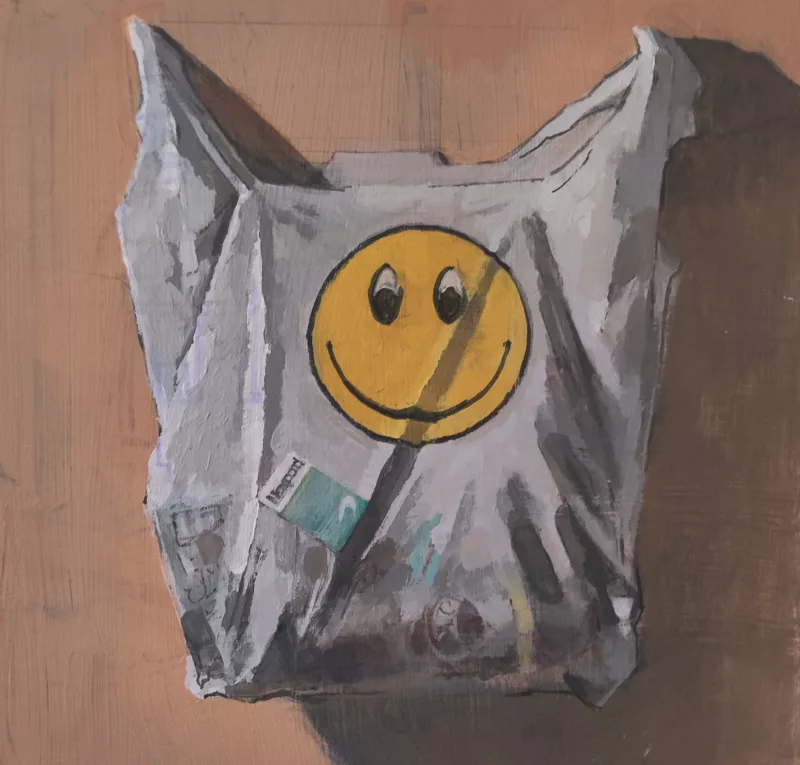
Weiss’s 22 small-scale drawings are the most architectural-looking pieces in the show, partly because they’re mostly devoid of people, and partly because he often uses lines to fill spaces, as well as define them. However, the arrangement of forms within the picture planes and sure-handed wielding of pen, ink, and graphite are hallmarks of an artist glorying in his materials. Weiss’s drawings are desolate, yet magnetic. The one painting he’s displaying, “THANK YOU,” a plastic shopping bag with a pack of cigarettes against a muted background, is remarkable for its dexterous handling of paint and muted tones.
Most of Young’s nine works (eight paintings and a drawing) are also uninhabited, although the artist himself makes an appearance in “Routines,” wearing a mask, reflected in a curved security mirror inside a shop. There’s a spellbinding quality to Young’s deeply observed pictures; they lead us to contemplate an ordinary sight like a traffic cone as if we’d never seen one before. His handling of paint brings life to the most mundane cement walls, wooden shelves, and tile floors.
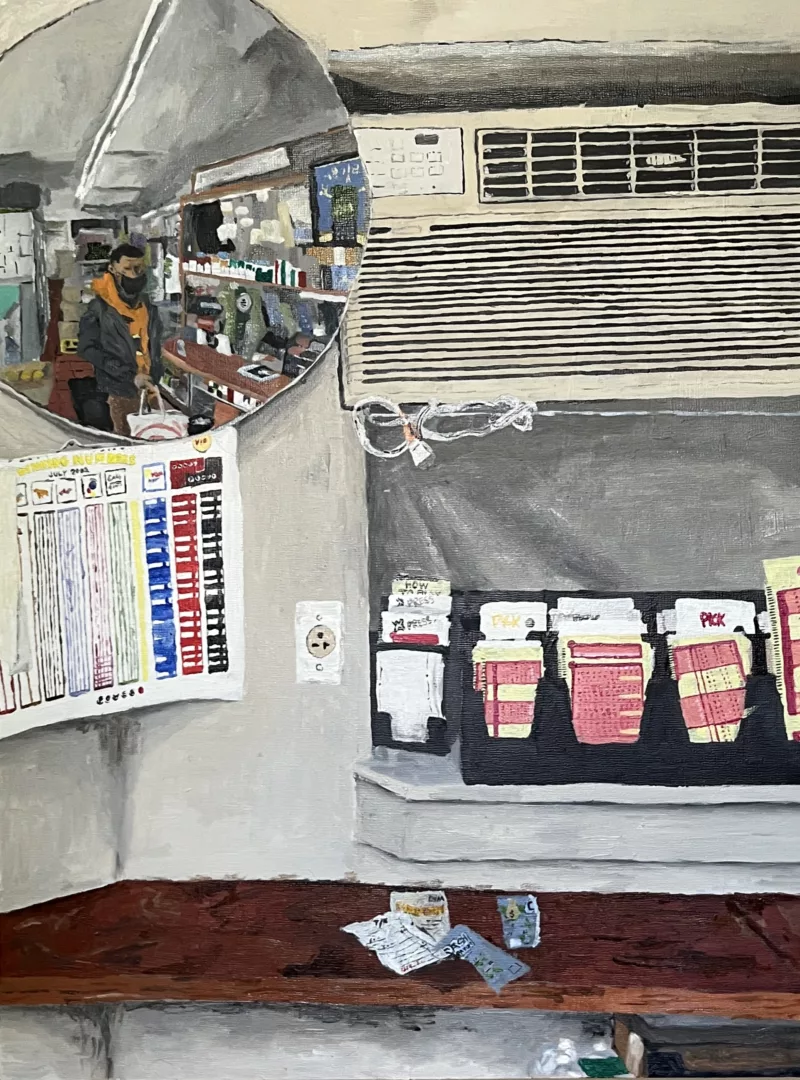
Mamba’s works are energetic, inventive, and semi-abstract. Most of his artworks, unlike Weiss’s or Young’s, have people in them. These paintings with layers of fabric, found objects, sewn-on embellishments, built-out constructions (as well as an actual construction), encompass complicated ideas regarding community, health, and inequity. Mamba’s gorgeously nuanced artworks touch on the benefits and drawbacks of corner stores, which can function as brightly-lit community hubs, but also as sources of unhealthy food, alcohol, cigarettes, and lottery tickets. “BITE”, for instance, is intricately constructed and shows relaxed-looking people gathering, as well as a tall building in flames on the left. The tension between good and bad feelings about corner stores is deftly expressed, and there are elements of deep sadness in his “Forgotten Memorial I” and “Forgotten Memorial II.”
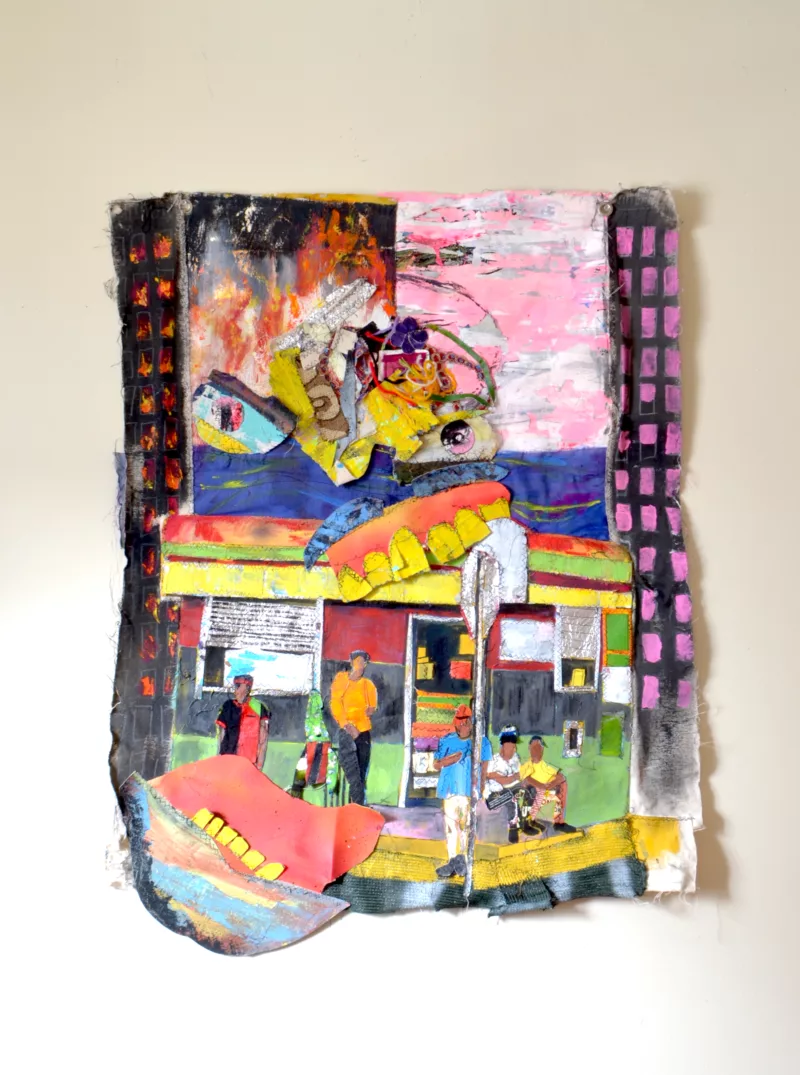
Mamba has thought a lot about community well-being, and in Philadelphia, hunger and inequity are a major problems. According to Feeding America nonprofit, the food insecurity rate in Philadelphia County for all citizens during 2021 was 13.6 percent; among Black people, it was 22 percent; for Hispanic people, 23 percent. When “Corner Stories” closes, all donations will be brought to Bebashi – Transition to Hope, 1235 Spring Garden Street, a nonprofit founded in 1985. Originally focused on healthcare for Black and brown people, Bebashi has since expanded its mission to encompass other community services, including hunger relief. When you visit this dynamic, exciting exhibition, bring a donation of food or toiletries if you’re able (here’s Bebashi’s wish list).
News from DVAA
DVAA has planning the redesign of its building in order to become ADA-compliant. During the process, DVAA learned that it urgently needs to repoint and star-bolt its façade. DVAA’s Building Restoration Fundraiser was launched to raise $15,000 by Aug. 15, in order to schedule the work.
In other administrative news, after serving as Co-Director with Samantha Connors for the past six years, Bryant Girsch will step down on Aug. 13. In his announcement, Girsch states, “While I am stepping down from DVAA leadership, I still plan to contribute to this community in a less official capacity as a friend, artist, and advocate.” Connors will stay on as Executive Director, and DVAA is hiring a Programming and Gallery Director.
Corner Stories, through Aug. 20 at Da Vinci Art Alliance (DVAA), with a closing reception and artist talk on Aug. 20, noon – 2 pm. 704 Catharine Street, Philadelphia. Gallery hours are Wednesday through Sunday, 11 am – 5 pm.




